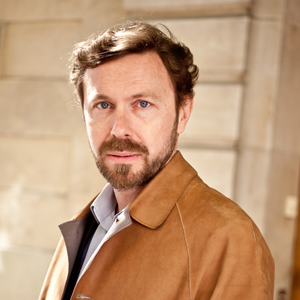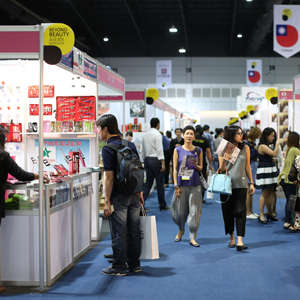Long time ago, Marie-Louise de Clermont-Tonnerre declared to a magazine that she had joined Chanel, by the time she was heading their PR, as one enters into religion. I borrow her words and assume I have entered the medical aesthetics world the same way. This was back in 2002, the first aesthetic purpose botulinum toxin Type A was expecting its French approval, and I remember thinking that this smooth and pacific revolution would not occur without me, whatever my participation would be.
Freshly ordained, I came across the way of the gods of aesthetics, international experts or discreet practitioners, all moved by a vision of beauty and balance, all gifted with a kind of magic at the end of their fingers. I also met some really bad ones, but who cares, as there is so much to tell about the good ones … The adventure was on.
Very promptly, the environment shifted and medical aesthetics became a smashing sensation topic, high jacked by those who did not appreciate anything in the matter. Trash TV, BOTOX(r) on front pages in order to boost print sales … no mercy was given, triggering taboos and envies such as eternal youth, charms and seduction gained back, the cost of procedures of how deep one must suffer to be beautiful. Last but not least, this money those new magicians make…
Alongside and far more positively, a new category of columns rose in media, piloted by journalists who became experts of the topic. Publication rhythm grew from one article focused on plastic surgery or non-invasive cares from time to time to a weekly on monthly feature, depending on media, not to mention the websites… And today, medical aesthetics is a widely reported topic.
Many reasons to this: The reality is that the revolution in the patient management that the arrival of the first aesthetic purpose botulinum toxin Type A in 2003 never ended. It initiated a perpetual move and think-tank, as well as an acceleration and an increase of procedures possibilities never denied since, all body zones included.
This expansion brings its part of smoke and mirrors as well as real gold nuggets:
If for some, the race to novelty in order to seduce customers and patients does not always match the necessary time and investments required to set-up a real innovation, safe and efficient, on the other hand, the concentration of the industry enables a positive acquisition dynamics: ‘small’ players with great added value can be purchased by ‘big’ players , as of the recent story of EarFold, initiated on a British dining table and now on the international stage, listened to with all the caring attention that well managed prominent ears, with no pain, can enable …
Now, what about us among all this? We breath in the air and live the era of medical aesthetics and can read through lines. When it comes to patients and consumers, this is another story as they remain to a low level of awareness.
As per example, looking at facial injectable devices, whereas one can notice a real “normalization” of the topic, that were sometime to have forget that this is medical still and above all, one can also notice that one real issue and one real stake stand along when it come to education: most patients are now aware of what they received when injected.
This is a real prejudice for laboratories who are real specialists, and also, even if some do not agree, for the physicians who believe that patients do not care knowing. Recycling, not word for word, the fist sentence of a famous French movie, ‘a man falls off the top of a forty floor building, and and long as he has not hit the ground thinks – so far everything is going so well- ‘
Of course the physician is the one who diagnoses and no-one else should. Still, I believe that the patient education enables the best outcomes. And I believe in only one type of exit: The one we can operate through the top. We all have everything to gain from a proper and efficient patient information.
So does the regulatory environment in France, who should be taking more part in the process. How many irreproachable doctors have I met, trapped into sanctions by their Body, for a media had mentioned their name pro-actively, which had irritated some jealous peers and had them frown? Why don’t we stop not allowing a direct communication that could be framed and controlled, when at the same time the Internet is sometimes the gate to all kinds of deception and myths?
The sad PIP story is one good example of extreme demonization. This is the trial of a fraud actioned by crooks, and it has become the Inquisition of a category, merging it beyond its will with a public health scandal. For sure it is, but it was not started by the health world. Were these unscrupulous people have been active in the car industry, they would have fraud brakes, safety belts or pollution detectors. The mix with other breast implants makers is shocking.
From a sanitary hypocrisy to a consumer paradox that could be its shadow, there are very little steps, as the myths and ‘ready-to-think’ are numerous when it comes to aesthetic surgery and medicine.
Examples of words heard too many times:
– To have some work done of the face could be looked at as cheating, whereas to have the body treated is looked at taking care of oneself and be respectful of others. I can hear everyday that I should not have my wrinkles addressed and stand my age, but I can hear from the same that since I received non-invasive ambulatory body contouring treatments I look great for 50 years, and shall I share the physician’s contact details? Why would there be a ‘trickery’ at treating the face when treating the waist is no trickery?
– An ‘old’ physician in therapeutics is a good one for he has seen a lot over his career and a ‘young’ aesthetic doctor is a good one for he looks young
– Deep dermal rehydration were to be a skincare novelty, and since there is no tissue lifting action I even heard it can’t be named injections properly speaking? What then? Is the doctor a beautician?
Moreover, the immediate reactivity era, adverse side effect of the Internet revolution, carries strong consequences in the consumer behaviours.
We sometimes bear with attitudes which have us think of a client rather than of a patient: ‘I want an appointment between now and tomorrow / I want immediate results that everyone can notice but that no-one can suspect, no bruise, no swelling, no post surgery / I purchase a lot in private sales and your treatments are too expensive’ etc.
The medical nomadism that this generates benefits to no-one, so don’t the overdone outcomes, very noticeable but not as numerous as the vox populi claim them to be.
So what should we do, each of us at his modest level? Sensitize and educate on and on and more into the aesthetic procedures in order to treat better over times.
And most, take one step aside: end of this March, more or less 10,000 physicians will join AMWC, coming from all over the world. This is an impressive figure, and even more when matched with this one: Some European studies demonstrate than only 3% of women convert to treatments when it comes to facial injections. Where is the little stone that blocks the whole machine hidden?
Some more open communications, a true guidance of patients all the way through a medical gesture and pathway, here is one of the stakes of our activity.
This is the duty and the task of everyone to keep in mind that in a zapping world, one needs to repeat the same messages over and over.
About
Jean-Yves Goar specializes in providing communications strategic counsel. His core skills are media relations strategy and crisis management, honed whilst supporting a wide variety of credentials and entities.
He has an expertise in dermo-cosmetics, medical aesthetics and healthcare. healthcare.















